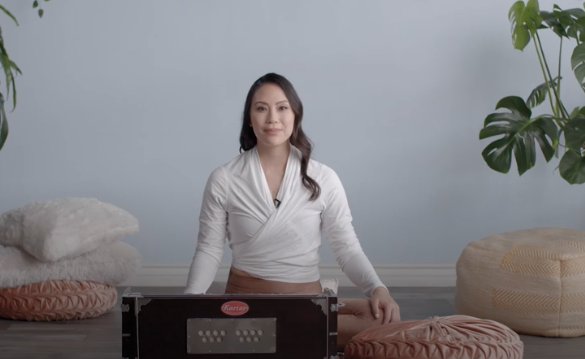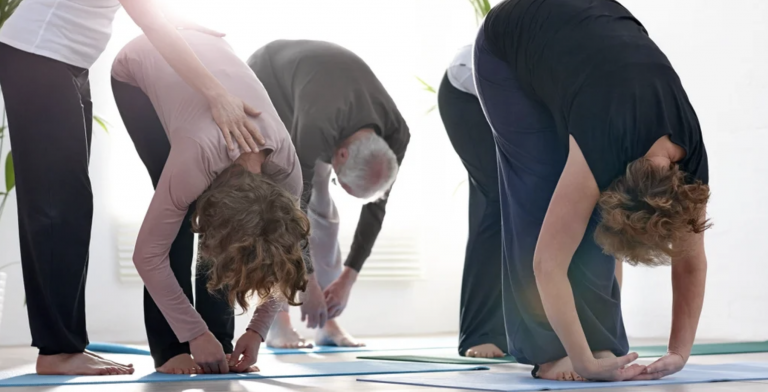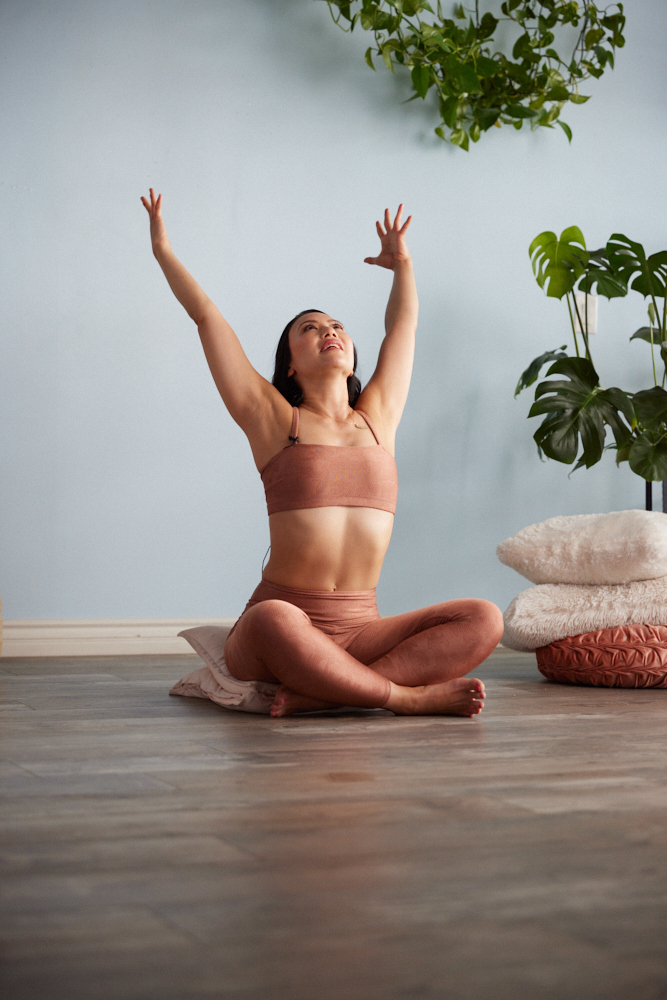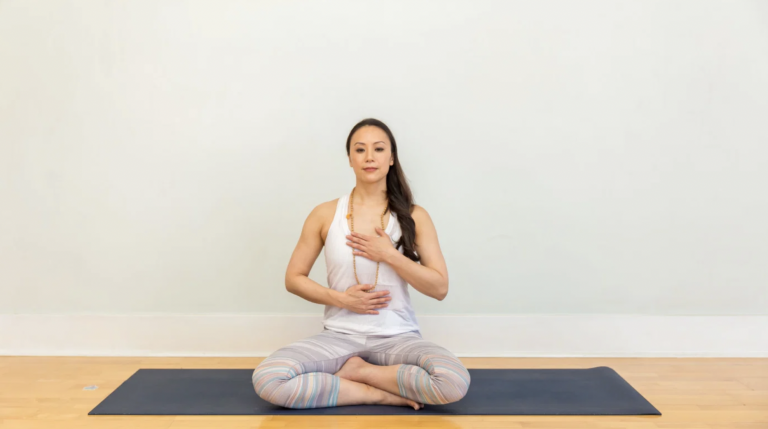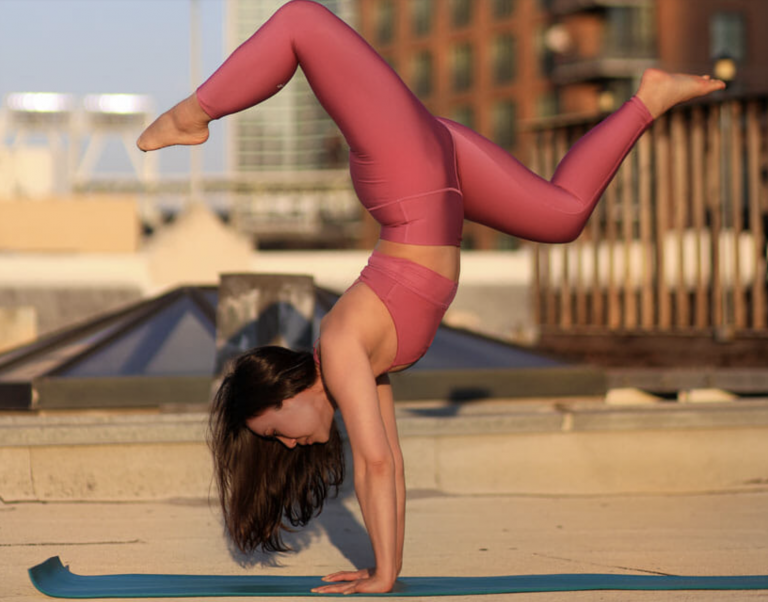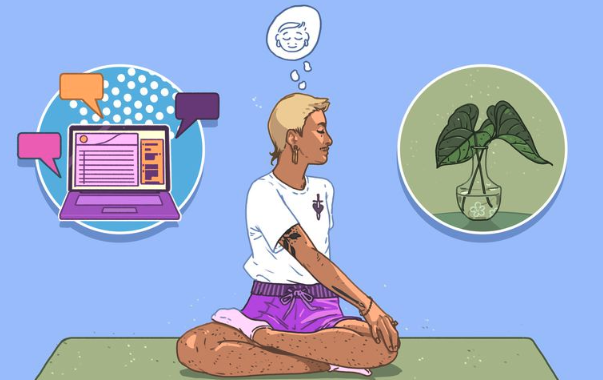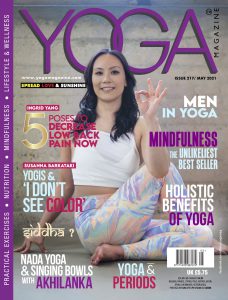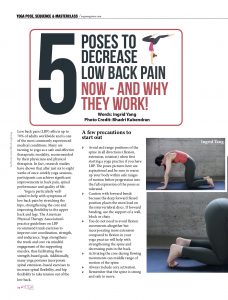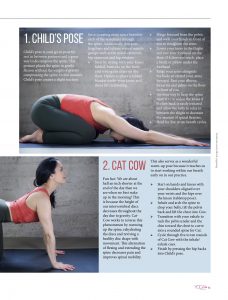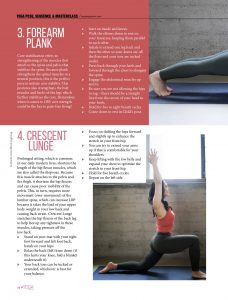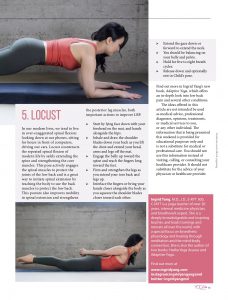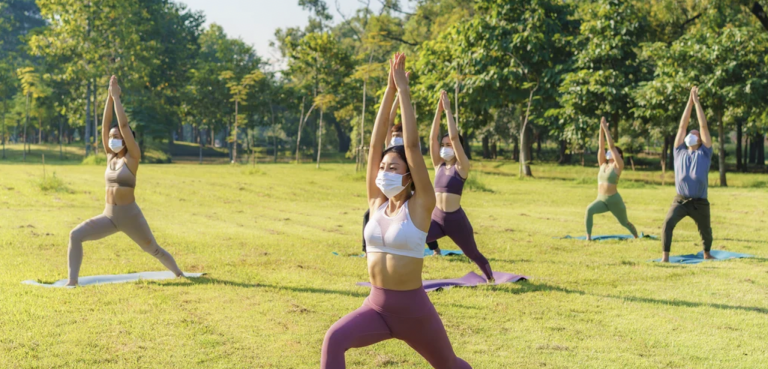Originally published in
Yoga Therapy Today, a publication of the International Association of Yoga Therapists (
www.iayt.org). Shared with permission.
Headaches are a universal human experience. According to the World Health Organization’s (WHO) 2016 Fact Sheet on Headache Disorders, 50%–75% of people over 18 suffered from a headache within the previous year. Of the people reporting, 30% described their headaches as migraines—and migraines rank sixth in the world for losses due to disability, from productivity and wages to quality of life. More painful to note: As many as 4% of people worldwide are estimated to have 15 or more “headache days” per month. Finding relief for patients suffering headaches has been the goal for Western medicine as well as holistic care.
Headache Types and Pathologies
The limbic system is involved in the emotional, behavioral, memo ry-storage, and fear responses to pain. The ventrobasal (front-lower) portion of the thalamus sends projections to the somatosensory cor tex, where pain discrimination (sensing of contrasts) and localiza tion are thought to occur. The medial (closer to the center) thalamus projects to the frontal cortex, where the affective and motivational responses to pain are believed to be mediated. In addition, evidence from positron emission tomography (PET) scans shows that the medial thalamus may participate in the transmission of both dis criminative and affective components of pain.1 This complex network demonstrates the importance of the thalamus in the prop agation of headache pain. Nonetheless, there are many causes of headache pain that should be understood by the yoga therapist—I will delineate below based on the type of headache.
Headaches fall into two cate gories, primary and secondary, with the assigned category relating to the underlying pathology. By definition, pri mary headaches are not associ ated with any type of preexist ing medical condition and comprise the overwhelming majority of recurring head aches. Given their high preva lence, this article will focus on primary headaches. There are three main types of primary headaches: migraines, tension type headaches (TTH), and cluster headaches.
Particularly in primary headaches, meditation has been found to decrease headache intensity and frequency with no associated side-effects.
Under normal physiological conditions, the brain itself is large ly insensate. Head pain occurs when nociceptive nerves (inflamma tion/chemical damage receptors) within the trigeminal, vagus, and glossopharyngeal cranial nerves (three of the cranial nerves) or the upper cervical roots are stimulated.1 To describe this phenomenon in scientific terms, from the trigeminal nucleus (the cell origin of the largest cranial nerve), nerve fibers transmit information that projects into deeper brain sites and further into the brainstem and thalamus (the sensory-system “hub” of our brains). From the brainstem and thalamus, information carrying pain sensations from the body is transmitted to other areas of the brain, such as limbic areas.
For most people, migraines arise from a complex genetic disor der with susceptibility that depends on specific genetic variants. The details of these genetic predispositions for migraine disorders are not entirely understood. What we do know is that, with migraines, cere brovascular (the blood vessels in the brain) and meningeal (the membrane that protects the brain and houses a vast network of nerves) pain stimulation may predominate.
Traditional theories of the cause of migraines fall into two cat egories: vasogenic (blood-supply based) and neurogenic (nerve based). With vasogenic migraines, the theory is that intracranial vasoconstriction (reactionary narrowing of the blood vessels within the brain resulting in a change of blood flow) is responsible for the aura portion of migraines, and the subsequent headache results from rebound blood-vessel dilation, distention of vessels within the brain, and inflammation of the sensory neurons that line these
hyperexcitation of the neurons moves across the brain’s cortex after chemical or mechanical disturbances. This hyperexcitation then causes a series of reactions that result in meningeal irritation and changes in the intracranial blood flow, precipitating migraines.
Tension-Type Headaches
Tension-type headaches are the least understood in headache pathology. These are the most common of primary headache disor ders, yet TTHs continue to defy a single pathophysiological expla nation. The importance of muscular and myofascial structures is acknowledged in many, but not all, cases of this type of headache. Given the focus on muscular and myofascial input in TTH, it is helpful to understand that myofascial stretching with yoga can help in this condition, as discussed below.
Cluster Headaches
Historically, little was known about the cause of cluster headaches. New speculation suggests that cluster headaches are caused by pathophysiological events that activate the trigeminal-vascular sys tem. (The trigeminal, cranial nerve V, is the largest cranial nerve, with projections through the face, head, and neck.) In this syndrome, pain is manifested in the first and second trigeminal division, causing sympathetic activation (usually represented as sweating of the forehead and face), sympathetic dysfunction (Horner’s syndrome, which is a droopy eyelid and constricted pupil on one side), and parasympathetic activation (tearing and nasal congestion). This array of symptoms is thought to be due to abnor malities at the point where the ophthalmic and maxillary trigeminal nerves converge.
Medical Management of Headaches
Headaches have traditionally been managed with medications. With that in mind, it is important to note that only half of people with headache disorders actually obtain relief with medications. Furthermore, those treated with medications often discontinue their treatment because of unwanted side-effects. Even worse, over use of medications in an attempt to manage headaches can often lead to a phenomenon called “medication-overuse headaches,” in which the quality and duration of headaches actually worsen. Another unfortunate paradox of headache management is that discontinuing medications after regular and frequent use may lead to rebound headaches. Because of these poor outcomes, side-effects, and sequelae due to medication use, complementary and alternative medicine has become common practice in headache management.2
Yoga Therapy for Headache Management
Yoga has been reported as a safe and cost-effective intervention for managing headache pain.3 A growing body of evidence supports the belief that yoga benefits both physical and psychosocial health through the mechanisms of downregulation of the sympathetic nervous system and the hypothalamic-pituitary-adrenal axis.4 As a result, yoga can play a vital role in reducing sympathetic activity, increasing parasympathetic activity, improving the quality of life, and decreasing pain levels when managing headaches.5
To support headache sufferers with yoga therapy, the practi tioner must start with a specific and detailed client history. This his tory needs to contain information about the client’s headaches, including frequency; duration; character; severity; location; quality; and the factors that trigger, aggravate, or alleviate the symptoms. With yoga therapy, a significant change in the nervous system demonstrating improved vagal tone and reduced sympathetic (fight or-flight) activity has been observed.6 This further resulted in improved cardiac autonomic balance. These findings indicate that adjuvant yoga therapy may be effective for people with migraines.
When recording the history, it is important to ask about specific lifestyle habits, such as diet, caffeine use, sleep habits, work, or personal stress. Any contributing factors should also be uncovered during history taking such as associated sleep disorders, depression, anxiety, and/or other underlying medical disorders. If any contributing factors are revealed at this time, consider referral to a qualified medical professional for further workup and evaluation of these underlying conditions. Be sure to also ask about relevant family history because, as mentioned above, some individuals have a genetic
Science for the Yoga Therapist
vessels, may help in reducing migraine attacks.8 NO plays a key role in regulating brain metabolism, cerebral circulation, and blood vessel function. It is one of the factors for modulating cerebral blood flow in response to changes in oxygen and carbon dioxide levels within the blood vessels. Repeated exercises that increase NO and sustain its levels within the blood have been demonstrated to decrease migraine frequency, severity, and duration.9 Thus, pranaya ma may be particularly beneficial for headaches, and in particular, for migraines, because studies have shown the improvement of NO levels due to pranayama practices.8
Breathwork
The conscious breathing of pranayama is known to have a calming effect on the nervous system and emotions, such as reduced fear and anxiety.10 Pranayama may further help to diminish tensions that have accumulated around the forehead, temples, neck, and shoul ders.11 Studies have shown that pranayama can lead to more oxygen delivery to the whole body, including to the heart and brain.12 As a lowered blood oxygen level is one of the risk factors of migraine, learning to efficiently use oxygen with pranayama can be a potential solution. Pranayama has been offered as a method for balancing the autonomic nervous system and has a powerful influence on stress release, as stress is a significant risk factor for vascular dysfunctions.11
I will not be so bold as to offer specific pranayama techniques for relief of migraines; the choices of technique will largely depend on the individual and on your history-taking, as stated above. I will note, however, that one specific study mentioned using kapalabhati (skull-shining breath or breath of fire) and demonstrated improve ment in NO levels and lessening of migraine severity with this technique.8
Mechanical Stretches of Muscles and Fascia
If done correctly, yoga can significantly release tensions accumulat ed around the areas of pain (often the forehead, temples, neck, and/or shoulders).9 For headaches specifically, yoga postures can tar get stretching of the neck, shoulder, and back muscles, followed by relaxation. Teaching correct posture (ergonomically speaking) and the stretching of cervical spine muscles can also be helpful, especial ly for TTH.13,14 As tight muscles can trigger headaches, yoga could potentially assist in alleviating symptoms of TTH.
predisposition for migraines.7 Above all, as always, yoga therapists must remember to stay within their scope of practice and refer patients to qualified medical professionals for support with any issues that will not or should not be addressed by yoga therapy.
The Role of Nitric Oxide
It is thought that the practice of yoga may increase nitric oxide (NO) levels in the cardiovascular system and even in specific parts of the body (see “Nitric Oxide & Mouth Breathing: Physiology You Want to Understand,” by Heidi Dickerson, DDS, at www.lviglobal.com/wp-content/uploads/2017/06/NitricOxideMouthBreathing.pdf ).
The theory behind this is that NO, a crucial and global signal ing chemical made in and excreted from the lining of the blood. Studies also demonstrate that specific stretches and manual therapies for the neck can be helpful in headache relief.15
Again, I will not opine upon exact postures to practice with clients, as every individual’s anatomy will be different, and again, your history-taking may reveal contraindications to head and neck stretching to end ranges. As always, working with clients one to one to determine appropriate practices will be the key to efficacy and safety.
Yoga as Exercise
The use of exercise as a prophylactic treatment for headaches has been researched and is recommended by clinicians more regularly for headache prevention. Studies have shown that exercise has a therapeutic effect on migraines by increasing blood levels of endor phins and pain-relieving hormones. However, it is important to note that intense exercise also paradoxically triggers increased calcitonin gene-related peptide (CGRP) and lactate levels, which may be a sign of increased inflammation,14 and thus sustain an environment to induce headaches. Therefore, although exercise may be indicated to increase pain-relieving hormones, a balance must be struck regard ing the intensity and duration of exercise.
This is where yoga may play a particularly helpful role in headache relief. Because yogic postures can be performed slowly and mindfully, along with breathing and relaxation exercises and pranayama, this type of physical activity may prevent an increase in CGRP and lactate levels. Thus, yoga, as a measured form of exercise with individualized pacing, may be particularly well-suited for headache prevention, with performance causing the release of pain relieving hormones and neurotransmitters while avoiding the release of potentially pain-inducing substances.
Meditation
Meditation is known to reduce headache duration and disability while increasing self-efficacy and mindfulness. Particularly in pri mary headaches, meditation has been found to decrease headache intensity and frequency with no associated side-effects.16 Moreover, meditation has been shown to significantly improve self-efficacy,
which is the ability to motivate, follow through, and complete tasks unaided. When self-efficacy is elevated, people have a better quality of life. The studies are varied regarding meditation techniques; cur rent guidance is simply to incorporate mindfulness-based exercises into yoga therapy for headaches.17 Similarly, positive effects of headache reduction have been found in other relaxation exercises, such as Yoga Nidra and guided relaxation.
A Case for Yoga Nidra
Although there is currently no specific published research
Yoga nidra meditation has been associated with increased endogenous dopamine release in the brain.21 (Dopamine is current ly seen as a neurotransmitter closely tied to our ability to think, plan, act, and experience pleasure.) As practitioners ourselves, we know that Yoga Nidra can cause us to feel ease and pleasure by decreasing our overall feelings of stress. And if generalized stress reduction can decrease headaches symptoms in clients, it is always worth a try.
Yoga Therapy—A Frontier in Headache Treatment?
As yoga therapists have long known, a sustained and continued yoga practice can contribute to a state of calm alertness and an increase in parasympathetic activation.22 This tones the stress-response systems and releases hormones that improve feelings of happiness and well being. In addition, yoga asana also improves physical and mental processes and helps relieve stress and anxiety, factors known to intensify migraine onset, severity, and frequency.
The system of yoga is a powerful tool that helps to build a com prehensive skillset of synergistic processes to improve function and quality of life. Within these processes, headache symptoms can be alleviated, lessened, or prevented. Yogic practices facilitate bidirec tional feedback and integration between high- and low-level brain networks. This makes yoga a unique therapy for balancing the auto nomic nervous system and influencing physical, psychological, and stress-related disorders, such as headaches. Introducing yogic tech niques to clients with chronic conditions of all kinds could mean symptom relief, and helping them to keep an open mind could be life-changing. YTT
References
- Warfield, C. A., Bajwa, Z. H., & Wootton, R. J. (2016). Principles and practice of pain medicine (3rd ed.). McGraw Hill Education/Medical.
- Sang-Dol, K. (2015). Effects of yoga exercises for headaches: A systematic review of randomized controlled trials. Journal of Physical Therapy Science, 27(7), 2377–2380. https:// doi:10.1589/jpts.27.2377
- Brummer, M. (2005). Yoga and ayurveda for headaches and migraines. Positive Health Online: Integrated Medicine for the 21st Century, 110, 45–48. Retrieved from www.positivehealth.com/article/yoga/yoga-and-ayurveda-for-headaches-and migraines
- Sharma, M. (2014). Yoga as an alternative and complementary approach for stress management: A systematic review. Journal of Evidence-Based Complementary Alternative Medicine, 19(1), 59–67. https://doi:10.1177/2156587213503344
- Evans, S., Subramanian, S., & Sternlieb, B., (2008). Yoga as treatment for chron ic pain conditions: A literature review. International Journal on Disability and Human Development, 7(1), 25–32. https://doi.org/10.1515/IJDHD.2008.7.1.25
- Kisan, R., Sujan, M., Adoor, M., Rao, R., Nalini, A., Kutty, B., . . . Sathyaprabha, T. N. (2014). Effect of yoga on migraine: A comprehensive study using clinical pro file and cardiac autonomic functions. International Journal of Yoga, 7(2), 126–132. https://doi:10.4103/0973-6131.133891
- Rizzoli, P., & Mullally, W. J. (2018). Headache. American Journal of Medicine, 131(1), 17–24. https://doi:10.1016/j.amjmed.2017.09.005
- Boroujeni, M. Z., Marandi, S. M., Esfarjani, F., Sattar, M., Shaygannejad, V., & Javanmard, S. H. (2015). Yoga intervention on blood NO in female migraineurs. Advanced Biomedical Research, 4, 259. https://doi:10.4103/2277-9175.172995
- Narin, S. O., Pinar, L., Erbas, D., Oztürk, V., & Idiman, F. (2003). The effects of exercise and exercise-related changes in blood nitric oxide level on migraine headache. Clinical Rehabilitation, 17(6), 624–30. Boroujeni, M. Z., Marandi, S. M., Esfarjani, F., Sattar, M., Shaygannejad, V., & Javanmard, S. H. (2015). Yoga intervention on blood NO in female migraineurs. Advanced Biomedical Research, 4, 259. https://doi:10.1191/0269215503cr657oa
- John, P. J., Sharma, N., Sharma, C. M., & Kankane, A. (2007). Effectiveness of yoga therapy in the treatment of migraine without aura: A randomized controlled trial. Headache: The Journal of Head and Face Pain, 47(5), 654–661. https://doi:10.1111/j.1526-4610.2007.00789.x
- Dabhade, A. M., Pawar, B. H., Ghunage, M. S., & Ghunage, V. M. (2012). Effect of pranayama (breathing exercise) on arrhythmias in the human heart. Explore, 8(1), 12–15. https://doi:10.1016/j.explore.2011.10.004 13. Hammill, J. M., Cook, T. M., & Rosecrance, J. C. (1996). Effectiveness of a physical therapy regimen in the treatment of tension-type headache. Headache: The Journal of Head and Face Pain, 36(3), 149–153.
- https://doi:10.1016/j.explore.2011.10.004 Amin, F. M., Aristeidou, S., Baraldi, C., Czapinska-Ciepiela, E. K., Ariadni, D. D., Di Lenola, D., . . . European Headache Federation School of Advanced Studies. (2018). The association between migraine and physical exercise. Journal of Headache Pain, 19, 83. https://doi.org/10.1186/s10194-018-0902-y 15. Castien, R., & De Hertogh, W. (2019). A neuroscience perspective of physical treatment of headache and neck pain. Frontiers in Neurology, 10, 276. https://doi:10.3389/fneur.2019.00276
- Gu, Q., Hou, J. C., & Fang, X. M. (2018). Mindfulness meditation for pri mary headache pain: A meta-analysis. Chinese Medical Journal, 131(7), 829–838. https://doi:10.4103/0366-6999.228242
- Wells, R. E., Burch, R., Paulsen, R. H., Wayne, P. M., Houle, T. T., & Loder, E. (2014). Meditation for migraines: A pilot randomized controlled trial. Headache, 54(9), 1484–1495. https://doi:10.1111/head.12420
- Kropp, P., Meyer, B., Dresler, T., Frische, G., Gaul, C., Niederberger, U., . . . Straube, A. (2017). Relaxation techniques and behavioural therapy for the
- treat ment of migraine: Guidelines from the German Migraine and Headache Society. Schmerz, 31(5), 433–447. https://doi:10.1007/s00482-017-0214-1
- 19. Gard, T., Noggle, J. J., Park, C. L., Vago, D. R., & Wilson, A. (2014). Poten tial self-regulatory mechanisms of yoga for psychological health. Frontiers in Human Neuroscience, 8, 770. https://doi:10.3389/fnhum.2014.00770
- Ferreira-Vorkapic, C., Borba-Pinheiro, C. J., Marchioro, M., & Santana, D. (2018). The impact of yoga nidra and seated meditation on the mental health of college professors. International Journal of Yoga, 11(3), 215–223. https://doi:10.4103/ijoy.IJOY_57_17
- Kjaer, T. W., Bertelsen, C., Piccini, P., Brooks, D., Alving, J., & Lou, H. C. (2002). Increased dopamine tone during meditation-induced change of conscious ness. Brain Research: Cognitive Brain Research, 13(2), 255–259.
- Kumar, A., Bhatia, R., Sharma, G., Dhanlika, D., Vishnubhatla, S., Singh, R. K., . . . Srivastava, M. V. P. (2020). Effect of yoga as add-on therapy in migraine (CONTAIN): A randomized clinical trial. Neurology, 94(21), e2203–e2212

